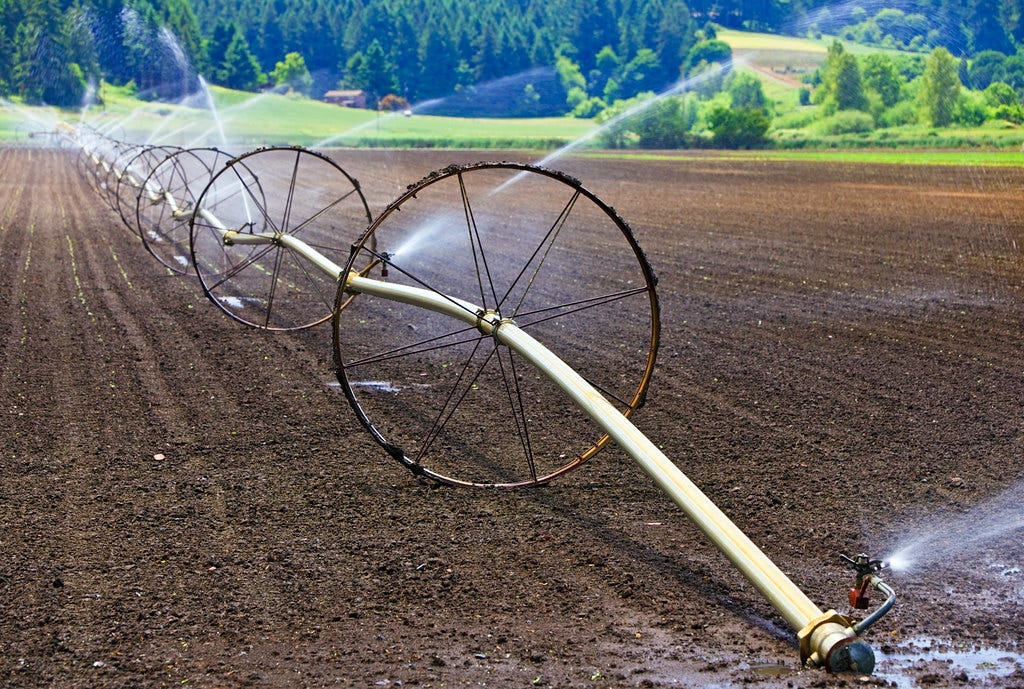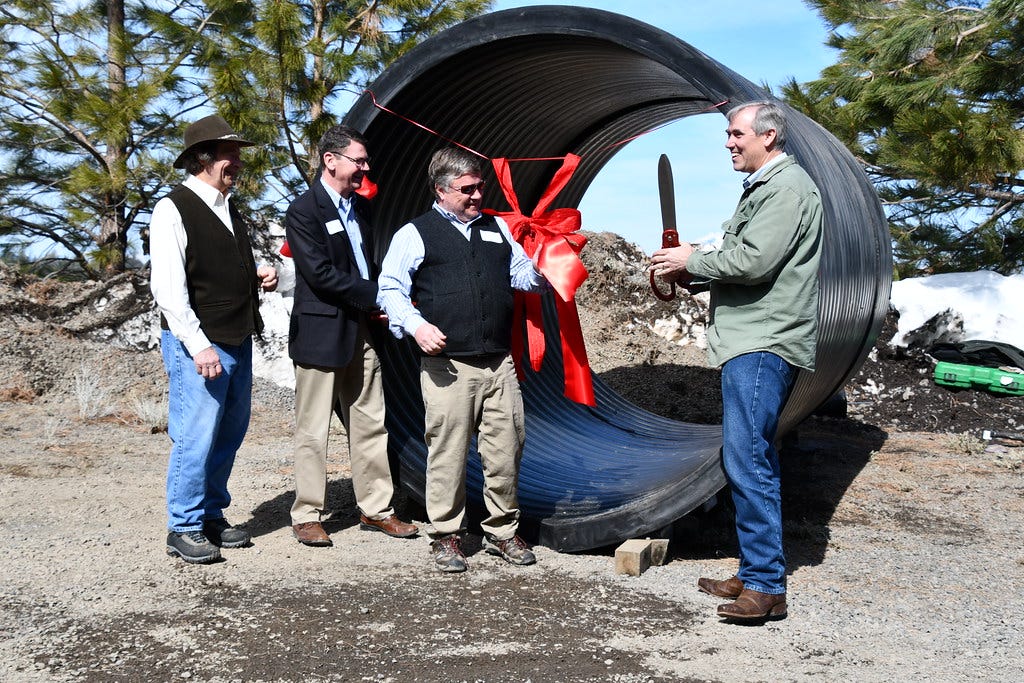Margi Hoffman: An inclusive approach to irrigation
Investing in modernizing this critical infrastructure is one of the greatest agricultural, environmental, and local energy development opportunities in the Western United States.
Margi Hoffmann is the Director of Strategic Operations for the Farmers Conservation Alliance (FCA), a non-profit organization that works with farmers, ranchers and irrigators to modernize water delivery systems throughout the Western United States. Prior to joining FCA, Hoffmann served as a policy advisor for two Oregon governors. She lives in Bend, Oregon, and enjoys getting outside with her husband, Josh, and their young daughter, Liesl.

Today, so much of what we hear reported in the news is about the polarization of our country. The story I would like to tell, however, is one of how the backbone of our country – agriculture – is leading the way to demonstrate the value of collaborative, bipartisan efforts that benefit all Oregonians.
For the most part, how we divert water from rivers to irrigate crops in the Western United States hasn’t changed in more than a century. The problem is these outdated systems could meet demands using far less water and energy – both of which are in short supply. A lack of efficiency is compounded by increased fragility: when these systems fail, as seen in Wyoming, the impacts are immediate and often catastrophic for farmers and rural communities.
Historically, farmers and ranchers have modernized this critical infrastructure on a project-by-project basis, both because the cost can be immense and because the work of navigating regulatory requirements, funding opportunities, and community needs often falls to the farmers and ranchers themselves (in addition to their day jobs).
Rethinking this approach, however, is a game-changer.
For example, in Oregon we’re reaping the benefits of water users, conservationists, agencies, and political representatives working together to modernize this aging infrastructure and realize win-win solutions.
When appropriate, replacing leaking, open canals with pressurized pipelines (one of many strategies for modernizing) allows water resource managers to optimize efficient delivery, increasing resilient, secure delivery to farmers and restoring flow to rivers and creeks. While that alone is a win, when we approach these projects looking across the needs of the entire community, modern systems can realize benefits that reach far beyond the farm.
Pipes create new infrastructure systems in which districts can install fish-friendly, in-conduit hydroelectric generators. These in-conduit projects not only provide an earned revenue stream districts can use to reinvest in modernization projects, but can also serve their communities’ emergency services with electricity during natural disasters, grid failures, or in the event of increased fire risk.
Trenches for the pipes also create a path for co-locating fiber optic and electrical cable, which can improve high-speed internet distribution in rural areas and allow for rural electrical vehicle charging stations. Building each of these pieces of infrastructure independent of one another costs approximately $3 million per mile. Co-locating them can decrease the cost of installation to $85,000 for that same mile. Adaptable infrastructure can also help to maintain groundwater levels in farming communities.
The best part? We’re already seeing innovative partnerships and increased investments to realize these benefits:
As a non-profit organization working in agriculture, we recognized the need for a program to help farmers navigate the complex planning, permitting, and funding necessary to develop modern, shovel-ready infrastructure projects. By using a scalable, thoughtful approach that engages with a range of community interests, the program’s aim is to modernize these systems in a way that positions rural communities to meet future needs. Visionary partners, such as the Energy Trust of Oregon, seeded this program to accelerate the pace of this important work.
Bipartisan congressional leaders have increased funding for rural resilience programs, including many within the United States Department of Agriculture and Natural Resources Conservation Service. Thanks to the leadership of Senator Merkley, and Oregon’s Congressional delegation and State Legislature, Oregon has leveraged over $200 million in the last four years to modernize systems throughout rural Oregon.

Last winter we celebrated the completion of 8,500 feet of pipe in Tumalo Irrigation District, saving over 2 million gallons of water a day during irrigation season and contributing to the regionwide efforts to restore flows to the Deschutes River and its tributaries. That flow restoration is also aiding in the reintroduction of imperiled salmon and steelhead. Nearby in Sisters, Oregon, a new 200-kilowatt hydropower facility will generate enough power to serve over 75 homes.
Both projects illustrate what can be achieved when the focus is on rural communities influencing these watershed-wide infrastructure projects. By providing water conservation benefits in addition to their direct needs (in this case water reliability, renewable energy generation, and drought resilience), we are creating smart, resilient water infrastructure.
Investing in modernizing this critical infrastructure is one of the greatest agricultural, environmental, and local energy development opportunities in the Western United States. Together we can move the needle on taking America into the 21st Century.
********************************
Learn more about irrigation modernization: watch this video
Keep the conversation going:
Oregon Way: facebook.com/oregonway, Twitter (@the_oregon_way)
Margi: facebook.com/farmersconservationalliance


